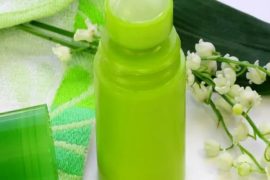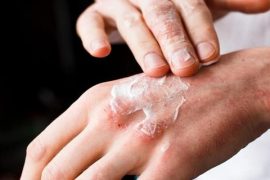Many people struggle with rather unpleasant and aesthetic ailments, which are cracked heels. However, this is not only a cosmetic problem, but also a health hazard. When the legs are too calloused, they appear on cracks and wounds that cause pain and discomfort when walking. These cracks can even bleed or fester. In addition, bacteria and viruses can enter the body through them.
That is why it is so important to take care of your feet in order to ensure their hydration and flexibility. Cracks in the heels are not always the result of poor foot care, wearing inappropriate shoes or too much weight, which causes too much pressure on the heels. Genetic conditions and diseases, such as diabetes, can also be the cause. How to care for your feet so that the heels do not crack? How to treat cracked heels?
Cracked heels: How to care for heels?
If we do not care too much about the heels, then over time the skin will become thicker, firmer and callosity. Without proper moisture, they can begin to crack. Unaesthetic gaps not only make us ashamed to show ourselves in open shoes. Sometimes cracks are so deep that they cause pain, begin to bleed or fester. In addition, bacteria and viruses can enter the body through cracked skin. Serious infections and illnesses can occur. That is why it is important not to skip heels with daily care.
Skin from the heels should be regularly removed from pumice or grater. This should not be done too intensely and often, because the skin will become even more keratinized. Pumice should be saturated with water and lubricated with solid soap. In addition, a moisturizer should be applied to the heels every day. It is necessary to apply a thick layer and put on cotton socks at night. You can also soak your feet in water to soften your skin.
Urea Cream Urea can help us with heel care. It is a chemical that moisturizes the skin, softens and exfoliates it in high concentrations. Urea added to the cream softens the skin and helps retain water in the epidermis. Therefore, choose creams with a high urea content (50%) if you have problems with corns. For prophylactic purposes, creams with a lower concentration can be used to prevent hardening and cracking of the heels.
Cracked heels: Moisturizing Foot Baths
The heels should be constantly moistened, so it is recommended to soak the feet in water with various additives. Adding table salt to water (3-6 teaspoons per liter of water) will be great. This bath should be used twice a week for at least 15 minutes. After this time, remove the corpus callosum from the heels and apply the cream. Herbal infusions are another effective way to moisturize your heels.
You can use softening fenugreek seeds or sweet clover and comfy roots with soothing and healing properties. Plantain leaves and flax seeds are also suitable for this, as well as yarrow grass or a calendula basket (anti-inflammatory effect). Various herbs can be created from herbs, for example, adding 2 tablespoons each to the bath. Heels can also be soaked in water with a glass of apple cider vinegar.
Cracked heels: Foot masks
A flaxseed mask also works well on cracked heels. The mucus and oily substances contained in it soften the skin and soothe irritation. Flax seeds should be poured with two liters of boiling water so that oatmeal forms from them. When it cools down, you can put your feet in it and stand for 20 minutes.
Another mask recipe is chopped banana and half an avocado (or two teaspoons of coconut oil). Put the paste on the feet and heels. We will wash off in 15–20 minutes. Honey will also work very well on cracked heels. It works moisturizing, soothing and antibacterial. Half a glass of honey should be poured into a bowl of water and soaked in a solution for the feet for 20 minutes.








